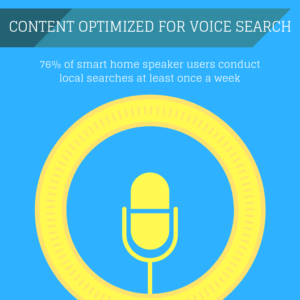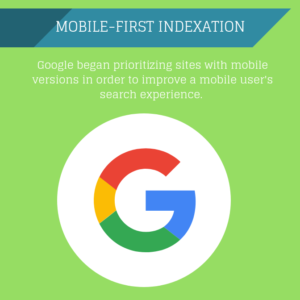A Recap Of SEO Marketing Trends in 2018
Every year, every quarter, every month, digital marketing sees new trends. In this ever-changing industry, if you’re not one step ahead, you’re already behind. In the past year alone we saw a new Google Search Console, Google Algorithm Update 2018, and many other changes to the way we reach consumers. Google also rolled out new updates that included mobile-first indexing, page speed as a Google search ranking factor, and a drop in snippet lengths. This is all towards Google’s goal of improving the online searchers’ experience. Those working with SEO have had to make great efforts to keep up with the constant change.
Why Follow SEO Marketing Trends?
The consumers’ behavior and priorities are always evolving, as well as the way they engage with brands. And when the consumer changes, so must the way companies market to them. People have learned that there’s no need to waste money on out-of-date SEO marketing strategies. By keeping up with the most recent SEO trends and techniques, you can ensure that your company wins a spot on the top of the search engine results page. If you can get on the top of the SERP, you’ll get more traffic to your website, improve your online presence, build your brand, and consequently convert more customers.
With 2019 finally here, we thought we’d go back and take a look at the most popular SEO trends from 2018.
Video SEO
Forrester Research found that, in 2018, having video content on your webpage made it 50 times more likely to get organic page ranks than plain text results. In fact, by 2022, internet video streaming and downloads will take up 82% of all online consumer traffic. Visual content has been shown to increase click-through rates, double search traffic, and attract more inbound links.

Last year, digital marketers made great efforts to optimize video content for SEO. The goal of video SEO is to create viral content; stuff that people want to share, will get backlinks, and that will convert new customers. The importance of video SEO stems from the necessity of having all forms of high-quality content that consistently garnishes backlinks over time. Although it had been previously overlooked, in 2018, digital marketers stepped up their video SEO game.
Speed It Up
In August, the Google algorithm update 2018 made changes that involved the more technical side of SEO. Page speed became an influential Google search ranking factor for mobile search queries, as Google wanted a faster mobile experience for its users. Many sites were greatly affected by the update and had to quickly implement new SEO practices, such as enabling compression and minimizing JavaScript, in order to keep up.
Thankfully, Google did not leave us in the dust. They hooked us up with numerous new tools, such as Lighthouse and the Chrome User Experience Report, that help monitor and optimize speed up your site. For reference, Google says that good site speed is under three seconds. But the faster your page loads, the better!
Voice Search
In 2018, the Virtual Digital Assistant (VDA) Market was worth about $5.21 billion, with nearly 40 million Americans owning some sort of smart speaker. As the systems become more advanced, people have become conditioned to rely on virtual assistants such as Apple’s Siri, Amazon’s Alexa, and the Google Assistant to manage their lives. Since the VDAs have developed more distinctive, human-like personalities, people have found it easier to integrate them into their everyday lives.

In order to be utilized by a VDA, markets must make sure that their content is optimized to answer voice searches. To do so, the content must be able to easily answer the search query, but in a conversational manner, created specifically for the searcher’s intent. Long-tail keywords and phrases are highly recommended.
Here are some tips on how to optimize your content for voice search.
Mobile-First Indexing
According to Statista, by the end of 2018, 56% of organic search engine visits in the United States came from a mobile device. As such, in March of 2018, Google started implementing mobile-first indexing, essentially rewarding sites that have mobile versions available. The Google algorithm update 2018 prioritized sites that are mobile-friendly over those that are not, meaning they placed them higher up on the Google search ranking. Now, the mobile version of your website is the primary version presented on the search engine results page.

To find out if your site is mobile-friendly, click here!
New Google Search Console
This past year, we were gifted with a new Google Search Console. The program makes it easier to optimize a website so that it ranks well on Google. The console allows you to see how well your site is performing overall, the status of index coverage and how you can improve it, your mobile usage metrics, and a broad report of all the data that applies to your website’s presence on the search engine.
For local businesses, the Google My Business app is a great way to manage your business’ presence on both Google Search and Maps. The app lets businesses edit contact information and location, add photos, and see the metrics of where your customers are coming from. It also allows them to engage with and monitor their customers through reviews, which is extremely important for local businesses.
In conclusion, as much as Google works hard to help the searchers, they work hard for us too. Digital marketers understand that search engine optimization is a key factor in the success of your company. By staying up to date on the latest SEO trends, you ensure that your business never falls behind. At least until the next update.





